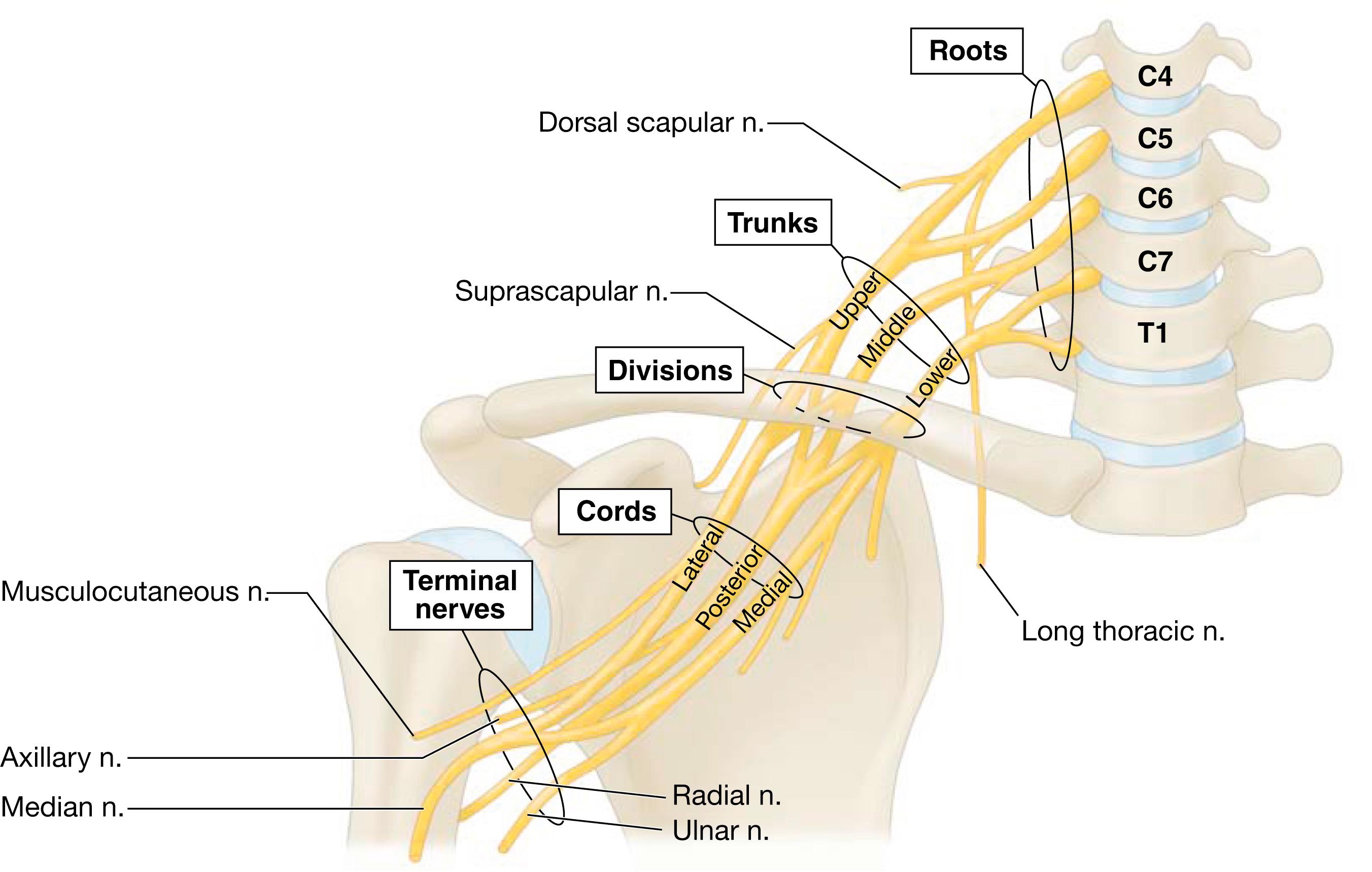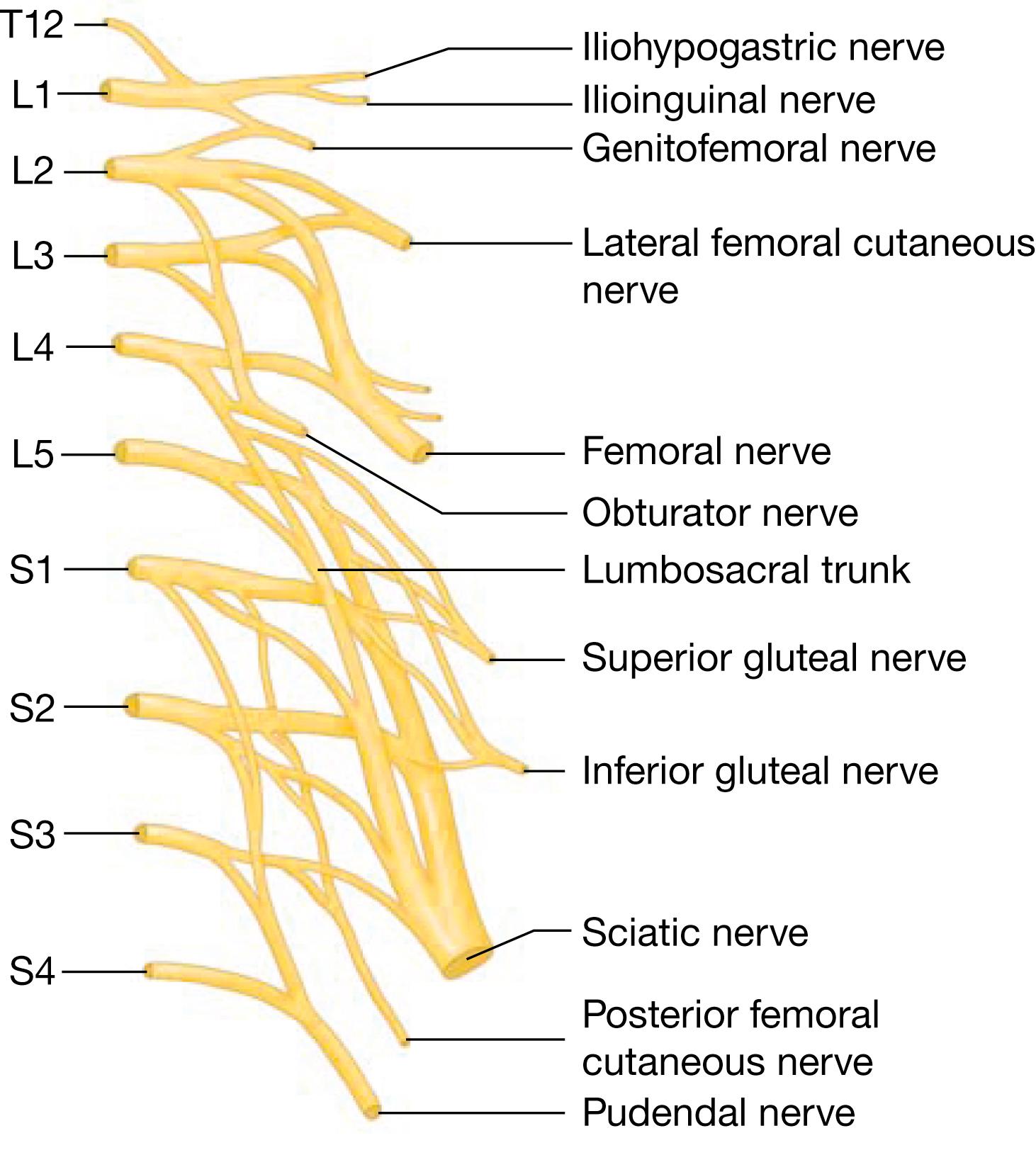Physical Address
304 North Cardinal St.
Dorchester Center, MA 02124
Despite the development of new therapies and related neurological complications, the two main considerations in patients with a history of cancer presenting with a brachial or lumbar plexopathy is neoplastic plexopathy or radiation-induced plexopathy. A focused cancer history and neurological examination can aid in localization and in narrowing down the differential diagnosis. Cancer-related plexopathies are more common, tend to be painful, and have a more rapid onset than radiation-induced plexopathies, which present in a more indolent fashion over the course of months to years following radiation therapy. Although imaging is helpful to visualize the degree of plexus involvement and to assess for locoregional disease, it is difficult to distinguish the two on the basis of imaging alone. Nerve conduction studies (NCS) and electromyography (EMG) can be useful if myokymic changes are present, as these are associated with radiation-induced plexopathies. Unfortunately, both types of plexopathies are treated with supportive measures, and survival and quality of life may be limited in many of the affected patients.
Cancer and cancer-associated treatments can have direct and indirect effects on all parts of the nervous system including the brachial and lumbar plexus. In a patient with a known history of cancer, plexopathies can be caused by trauma from surgery or anesthesia, metastatic tumor spread, radiation therapy, chemotherapy, immunotherapy, and radiation-induced tumors. Cancer patients are also susceptible to acute plexopathies that are unrelated to their malignancy or its treatment. A thorough understanding of neuroanatomy is essential, as the clinical examination and diagnostic studies can help with localization and point to a specific etiology. Cancer history with particular attention to pathology, prior treatments for cancer including any surgeries, radiation therapy (including type, field, and dose delivered), conventional chemotherapies, targeted molecular therapies, and immunotherapies, as well as any clinical trial protocol should be noted. In patients without a known history of cancer, a family history of cancer and risk factors for malignancies should be investigated (e.g., smoking history, HIV or immunosuppression, prior history of radiation, and tumor predisposition syndromes among others). Relevant history for non–cancer-related causes of plexopathies including diabetes, recent vaccinations, and intercurrent illnesses should also be determined. Imaging modalities, including magnetic resonance imaging (MRI) or computed tomography (CT) scans, and electrophysiologic testing with NCS and EMG are useful adjuncts to aid the diagnosis of plexopathies.
The brachial plexus consists of the ventral rami of the C5–C8 nerve roots ( Fig. 22.1 ). These later form three distinct trunks: superior (C5, C6), medial (C7), and inferior (C8–T1), which are then further subdivided into dorsal and ventral divisions. The dorsal divisions converge to form the posterior cord from which emerge the thoracodorsal nerve (to the latissimus dorsi), the subscapular nerve (to the subscapularis), the axillary nerve (to the deltoid), and the radial nerve (motor innervation to the triceps, brachioradialis, biceps, wrist extensor, finger extensors, and sensory innervation to the posterior aspect of the arm and forearm). The ventral divisions give off the lateral and the medial cords. The lateral cord branches into the musculocutaneous nerve (motor innervation to the biceps, brachialis, coracobrachialis, and sensation to the radial aspect of the forearm). The lateral cord also converges later on with the medial cord to form the median nerve (with motor innervation to the forearm flexors, pronator teres and pronator quadratus, thumb flexors and lumbricals, and sensation to the medial palm and first three and a half fingers). The medial cord also supplies the ulnar nerve, which in turn supplies the intrinsic muscles of the hand and some of the flexors of the hand and digits (flexor carpi ulnaris, flexor digitorum profundus II and IV, abductor, opponens and flexor of the fifth digit, and sensation to the ulnar aspect of the palm).

The sympathetic chain connects to the brachial plexus through the gray rami communicantes, and involvement of the brachial plexus, especially of the C8 and T1 nerve roots, can present with Horner syndrome consisting of ptosis, miosis, and anhidrosis through the disruption of second order sympathetic fibers.
The lumbosacral plexus consists of the ventral rami of L1–S2 nerve roots and is subdivided into the lumbar and sacral plexus ( Fig. 22.2 ). The lumbar plexus has anterior and posterior divisions, with the anterior division giving rise to the iliohypogastric, ilioinguinal, and genitofemoral nerves (supplied by L1 and L2), which provide sensory innervation to the lower abdomen, upper thigh, and lateral perineum; and the obturator nerve (supplied by L2–L4), which provides motor innervation to the adductors and gracilis muscles. The posterior division of the lumbar plexus is made up of the iliohypogastric and lateral femoral cutaneous nerves (L2–L3) with sensory afferents from the lateral hip and thigh; and the femoral nerve (L2–L3), which provides motor fibers to the psoas, iliacus, sartorius, and quadriceps. It also receives sensory afferents from the anterior thigh and medial upper leg. The sacral plexus consists of the ventral rami of S1–S4, as well as a branch of the lower lumbar plexus (L4–L5). The sacral plexus is further subdivided into the anterior division, which provides motor fibers to the quadratus femoris and hamstrings; and the tibial nerve (L4–S3), which provides motor fibers for the foot dorsiflexors and intrinsic foot muscles. The posterior division branches into the common peroneal nerve (supplied by L2–S2) to the peroneal muscles, tibialis anterior, extensor digitorum, and extensor hallucis and has sensory afferents from the lateral leg, dorsal foot, and toes. It also gives off the superior (L4–S1) and inferior (L5–S2) gluteal nerves supplying the gluteus muscles. The posterior division is the origin of the sciatic nerve, which divides into the common peroneal and tibial nerves, and the posterior femoral cutaneous nerve (S1–S3), which carries sensory information from the posterior thigh. The perineum is innervated by another branch of the sacral plexus, the pudendal nerve (S2–S4).

Become a Clinical Tree membership for Full access and enjoy Unlimited articles
If you are a member. Log in here